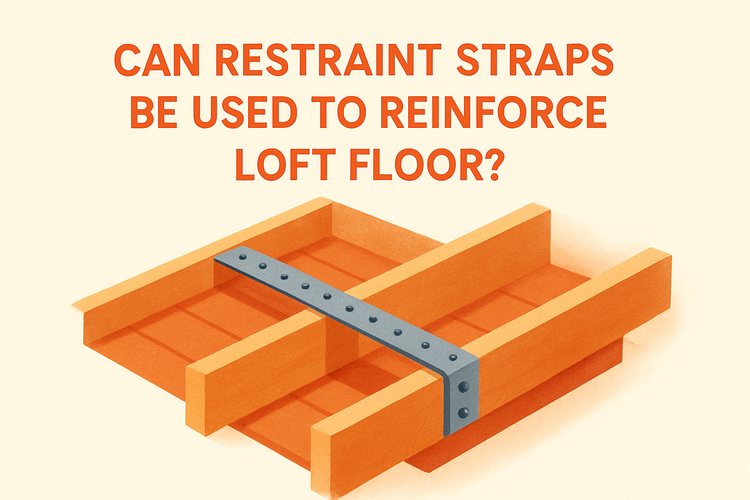Can Restraint Straps Be Used To Reinforce Loft Floor

Understanding the Role of Restraint Straps in Loft Floor Reinforcement
Restraint straps are essential building components typically used to tie timber structures back to masonry. Their application in loft floors comes from their ability to provide lateral support and distribute loads evenly.
While not originally intended as primary load-bearing supports, restraint straps can indeed help to reinforce a loft floor when used in conjunction with other structural aids. They are particularly effective where floors may experience movement or require additional stability due to dynamic loads. Understanding their limitations and strengths is key to using them strategically in loft reinforcement projects.
When and Why to Use Restraint Straps in Loft Floors
Restraint straps are most beneficial in loft conversions or structural upgrades where the existing framework may not meet modern codes or needs reinforcement. They offer an effective, low-profile solution to ensure floors remain stable—especially in older buildings with changing or increased loads due to new occupancy or usage.
They are especially useful when floor joists run parallel to load-bearing walls and need to be tied back to prevent lateral movement. In these scenarios, the restraint straps act in tension, helping to anchor the joists to the wall structure. For best results, straps should be used in combination with approved fixings like screws and nails and bolted securely to wall plates or studs.
Additionally, straps should meet BS EN 845 requirements and be galvanized to ensure long-term resistance against corrosion. It is crucial to space them correctly, typically every 2 meters along the supporting wall, for optimum load-sharing across the floor frame.
Integrating Restraint Straps with Other Reinforcement Components
To create a fully reinforced loft floor system, restraint straps should be considered as part of a broader connection strategy that includes load-bearing reinforcements. These might feature joist hangers, angle brackets, or timber connectors.
Joist hangers, in particular, work well with restraint straps by providing vertical support while the straps manage lateral stresses. Using both together ensures floor joists are well-supported at both ends and remain stable under live and dead load conditions. Angle brackets can be added at key junctions to maintain frame rigidity under shifting conditions, such as temperature or humidity variations.
Where the loft space is being converted for habitation, meeting Building Regulations becomes critical, and integrating restraint straps as part of a compliant reinforcement plan becomes not just beneficial but often necessary. Consult structural engineering guidelines and local building codes for accurate implementation.
Installation Best Practices for Secure and Durable Results
Proper installation of restraint straps is essential to their effectiveness. Positioning them inaccurately or anchoring them poorly can lead to weakened structural integrity, defeating the purpose of their inclusion in a loft flooring project.
Begin by identifying wall-joist junctions needing reinforcement. Install straps tightly against the timber and ensure full contact across their length. Fasten them with the recommended number and type of fixings, preferably construction-grade screws or nails.
In cases where the wall construction presents specific challenges—such as cavity walls or those made from lightweight blocks—additional supports like post bases or masonry connectors might be necessary to distribute forces appropriately. Always pre-drill where necessary and avoid overtightening to minimize warped metal or timber damage.
Periodic post-installation inspections should be conducted, especially in conversions that may experience more movement than newer constructions. Retightening or even replacing worn straps can maintain continued performance, keeping your floor stable for years to come.
Limitations and Considerations for Using Restraint Straps
While restraint straps offer valuable reinforcement potential, they're not a cure-all. It's crucial to understand where they fall short and when alternative or additional supports are needed.
Restraint straps primarily work in tension and do little to prevent downward deflection or buckling of undersized or overlong joists. If the primary structural elements are compromised or unable to carry load effectively, other reinforcements like sistering joists or using heavy-duty joist hangers should be considered.
Using restraint straps improperly—such as placing them on non-load-bearing walls—or choosing incorrect sizes can render them ineffective. Consider differential movement in timber and masonry to avoid separation or stress cracks. In high-load applications, such as supporting large storage spaces or transformation into living areas, full structural assessments are essential to determine if restraint straps alone can supplement loads without failure.
